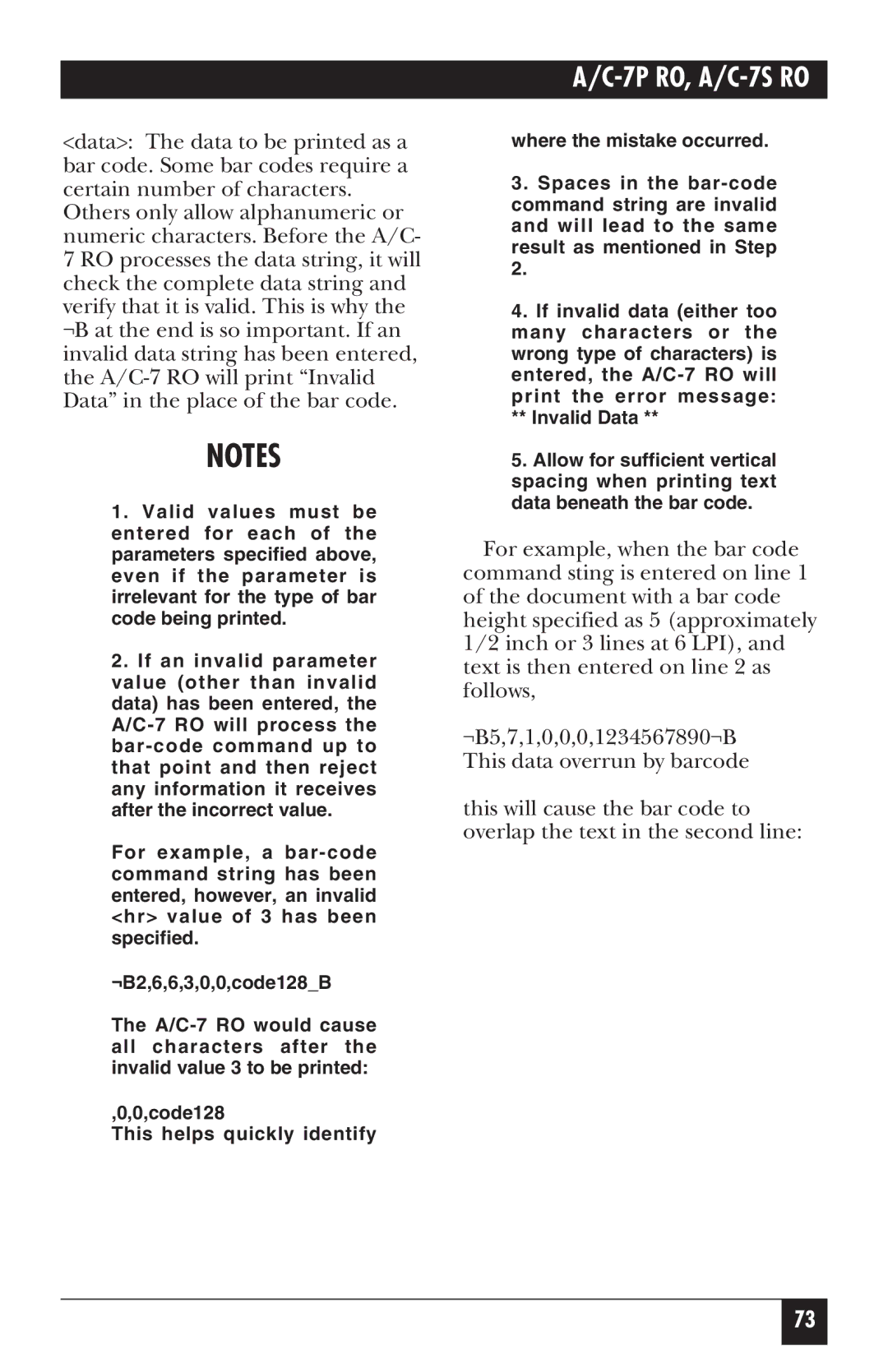
A/C-7P RO, A/C-7S RO
<data>: The data to be printed as a bar code. Some bar codes require a certain number of characters.
Others only allow alphanumeric or numeric characters. Before the A/C- 7 RO processes the data string, it will check the complete data string and verify that it is valid. This is why the ¬B at the end is so important. If an invalid data string has been entered, the
NOTES
1. Valid values must be entered for each of the parameters specified above, even if the parameter is irrelevant for the type of bar code being printed.
2. If an invalid parameter value (other than invalid data) has been entered, the
For example, a
¬B2,6,6,3,0,0,code128_B
The
,0,0,code128
This helps quickly identify
where the mistake occurred.
3.Spaces in the
4.If invalid data (either too many characters or the wrong type of characters) is entered, the
5.Allow for sufficient vertical spacing when printing text data beneath the bar code.
For example, when the bar code command sting is entered on line 1 of the document with a bar code height specified as 5 (approximately 1/2 inch or 3 lines at 6 LPI), and text is then entered on line 2 as follows,
¬B5,7,1,0,0,0,1234567890¬B This data overrun by barcode
this will cause the bar code to overlap the text in the second line:
73
